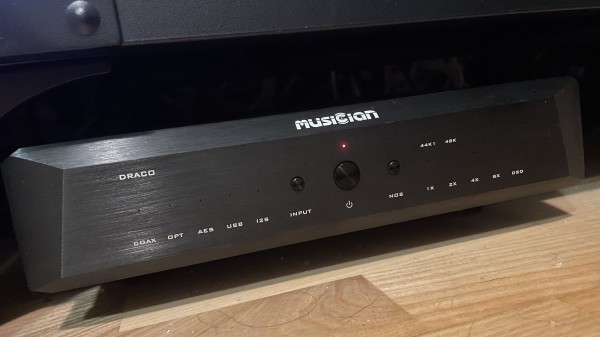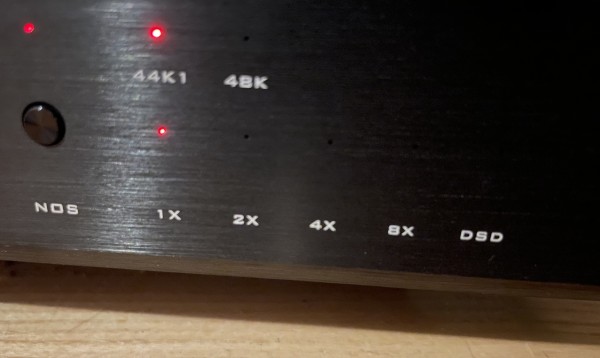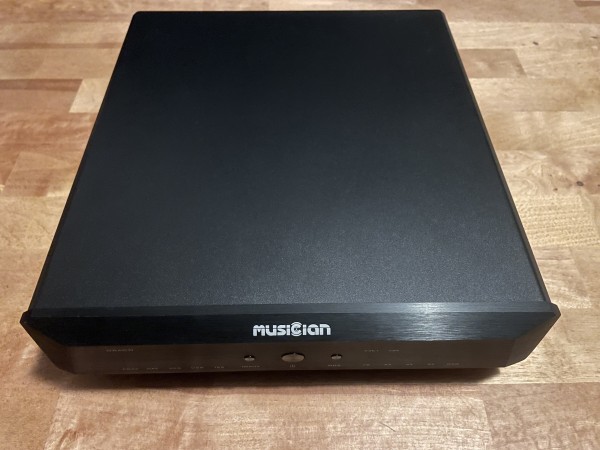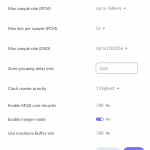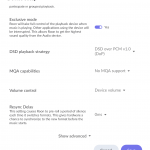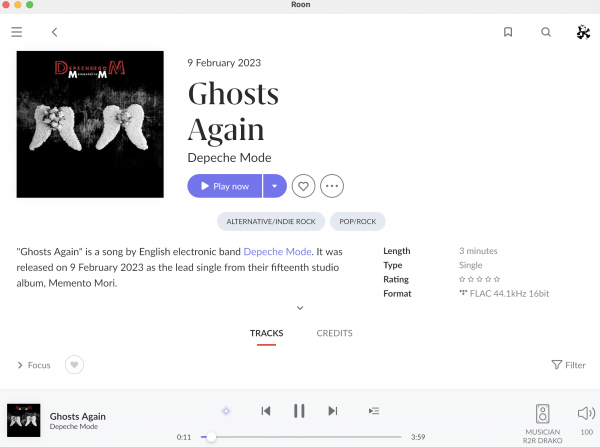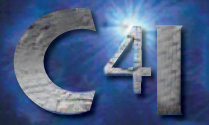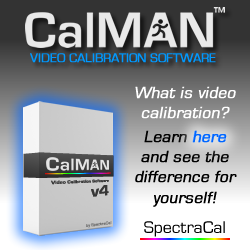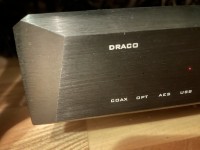
W tytule tym razem zdradzam dwie główne cechy tego przetwornika. Dla zwolenników krótkiej formy – dalej można nie czytać hyhy. Dla reszty garść przemyśleń na temat tej fajnej skrzyneczki. Fajnej, bo formą w pełni nawiązującą do droższych, żadnych oszczędności tutaj poza po prostu mniejszym formatem (jest mniejszy, ale grubociosane ale i słuszna waga… ciężkie to! Lubimy) mamy to samo. Znaczy mamy w wydaniu Musician Audio przetwornik cyfrowo-analogowy R2R wyposażony między innymi w interfejs I2S (HDMI) oraz balans na wyjściach, tryb NOS (non-over-sampling… tu szczerze, nie widzę różnicy), bardzo dobrą implementację SPDIF. Odnośnie ostatniego, świetne brzmienie z srebrnych krążków, jak ktoś tak gra z takiego źródła muzyki tj. srebrnej płytki to naprawdę szczerze polecam właśnie tego klamota.
Bo właśnie tym, co wyróżnia tę propozycję na tle innych jest „analogowość” rozumiana przez miękkość, lepkość dźwięku, niebywale rozepchniętą przestrzenność, coś co zwiemy płynnością… czyli, że jest easy listening. To zazwyczaj oznacza, że nie różnicuje a ujednolica, że rozdzielczość cierpi, że nie ma mowy o szczególe. Znaczy nie jest to nie tylko szkiełko i oko (podkręcone i szklisto-suche granie), ale wgląd w nagranie z ekspozycją mikro-detali. Tego tu nie uświadczysz. Także jak tego akurat szukasz to odpuść, to nie dla Ciebie. Jeżeli jednak cyfra ogólnie Cię wku… irytuje (w tych czasach to jest jakaś aberracja, no ale są takie pierniki), jak na Twoim adapterze (lubię to, inni mówią gramofonie, ja wolę tak) ląduje czarny krążek, albo sobie taśmy słuchasz oldschoolowo to właśnie znalazłeś coś idealnego.
Tak, takie są skojarzenia jakie budzi obcowanie z tym klamotem. Właśnie takie. Takie przerobienie cyfry w coś kojarzącego się nie z komputerem, bazą danych, plikiem, DSP i co tam jeszcze, a właśnie erą sprzed, kiedy muzyka wymagała większego skupienia, zmuszała do ruszenia czterech liter, stanowiła coś mniej konsumpcyjnego, w tle, no produktu zwyczajnego, a bo ja wiem? Wzniosłego? Nie piszę elitarnego, bo od zawsze była dla każdego i w różnej formie, ale „uważność”, skupienie, choćby nie plejlistość i utworu-chwilość, a cały album, cały koncept… ehhh.
Dobra, wychodzę ofc na wapniaka, co to wzdycha do starego, ale też jest ku temu okazja, bo DRACO jest właśnie taki stary. W obyciu, w formie, w treści jest. Bo to duże, ciężkie jak na centymetry jakie liczy, zwalisty, komunikujący się miniaturowymi diodkami tylko, żadne displeje, klamot, który wywołuje nostalgiczne wspomnienia. Kiedyś tak to wyglądało (w sensie czarna skrzynka do zmiany cyfrowego medium na analogowe). Aaaa i bym nie wspomniał, a to ważne, ten DARCO jest ciemny, to jest takie elektroniczno-skrzynkowa wariacja nauszników HD-650. Znaczy słuchawki legendarne, które u nas w wersji dawnej, z wypustu dawnego cieszą nadal ucho i które właśnie takie są – ciemniutkie – jak wiemy. A to obiecuje jeszcze coś dla takiego kogoś jak ja EXTRA. Baaaaasssssssss. Nisko, organicznie, bogato… oj taaak. Co oczywiście roluje nam górę, wyraźnie uszczuploną, mniej występującą. Dla takiego bass-head-a jak mua, to w to mi graj, bo dla mnie basior jest często esencją, bez tego nie ma satysfakcji.
Wspomniałem o braku różnicy w NOS? Wspomniałem. Często w przetwornikach dyskretnych, opartych na opornikach i tranzystorach, przełączenie na tryb bez nadpróbkowania zmienia w brzmieniu bardzo wiele. Tu nie udało się wychwycić różnicy, co interpretuję albo jako kiepska implementacja takiego rozwiązania, albo… konsekwencja przyjętego przez konstruktorów układu. Ten, podobnie jak w Denafrpisie (ta, zaraz będzie o bezpośrednim konkurencie, przetestowanym u nas Aries II tego właśnie producenta, który zasłynął swoimi R2R na rynku) został opracowany wokół programowalnej kości, prawidłowo byłoby napisać procesora DACa – Altera Cyclone IV. To popularna kość FPGA, która pełni tutaj zasadniczą rolę układu odbiornika wejściowego, obsługi filtrów cyfrowe, nade wszystko jednak kości sterującej przełączaniem oporników. Interfejs USB jak zwykle ma swój własny sterownik, ale też oryginalnie bo nie XLINX/XMOS tylko ARM-owy procek STM32F446.
Na szacun zasługuje to, że wszystko tutaj napisano (kod) pod to konkretne rozwiązanie, znaczy platformę sprzętową. Jak już pisałem w recenzji droższego Pegasusa (został w redakcji, nabyty – bo za dobry, by oddać) Musician Audio napisało sterownik we współpracy ze specjalistą pod Windę (Aoshida Tesycon). To samo tyczy się wspomnianej kości FPGA. Przy czym (to hipoteza, nie mam twardych na to dowodów) Denafrpis oraz Misician korzystają z tego samego patentu na architekturę układu, podobne są płytki (PCB), kod też wygląda na tożsamy. Cóż, Chiny – nie dziwi. Fajne jest to, że o ile Denafrpis ma taniego Ariesa (Aries II obecnie zwany Enyo, nasza recka: http://hd-opinie.pl/5429,audio,inaczej-i-lepiej-z-pliku…) to tam cennik szybuje w stratosferę, a u rodzimego rywala jest jakby taniej. Mniejsza. Wygląda mi to na jakiś outsourcing, może nawet świadome współdzielenie, dla nas o tyle przyjemnie, że mamy większy wybór. Bo też te skrzynki różnią się formą dość zasadniczo i Aries II jest bardzo klasycznie do bólu, no nudny, dość lekki i bardziej taki biurkowy, że tak powiem, to DARCO to po prostu klamot kompaktowy może, ale na poważnie też pod salon robiony. Oba nie mają pilotów, także trzeba ruszyć 4 litery, jakby co, ale też specjalnie nie ma czego tu ustawiać – jak już gramy – bo to czyste DACzki są.
Bardzo powyżej cennika materiałowo. Ciężkie. Grubociosane
To, co zdecydowanie wyróżnia na tle podobnie wycenionego (obecnie, bo cena poniżej 4k, było ponad u Denafrpisa) Ariesa II to w pełni zbalansowany tor ze wspomnianym interfejsem I2S oraz AES/EBU. Tego w Ariesie nie ma, tutaj w DARCO to jest. Dla mnie to i tyle istotne, że właśnie cyfrowym, zbalansowanym podpięte było z transportem Musical Fidelity M1 i kompakt zagrał niemal-jak czarna płyta. Byłem pod giga wrażeniem, a to wrażenie pewnie potęgował, tym razem udany mariaż z końcówką Roksana. Także balans z bardzo płynnym, myzykalno-przestrzennym brzmieniem. Słuchało się tych płytek z przyjemnością, na tyle dużą, że specjalnie nie odczuwałem potrzeby szybkiego przejścia na komputerowe, które miało być głównie. To ten wspomniany przeze mnie na wstępie „+” dla cyfro-sceptyków, analogo-lubów. Fizyczne, ale przecież cyfrowe źródło, jakim jest srebrny krążek bardzo tutaj zyskał.
Pogłębieniem tego syropu, lepkości, ciepłoty i to znaczącym (znowu, kto co lubi) było przejście na SE i końcówki CULM na diabełkach. To jeszcze bardziej pójście w stronę umownego analogowego, teraz już z oczywistą utratą selektywności na rzecz gładkości, wręcz słodyczy jaka sączyła się z głośników. Takie bardzo nie cyfrowe granie. Szybkie sprawdzenie staruszka NADa 5120 (igła) i …mhm… jesteśmy w podobnym środowisku, gdzie muzyka jest bardziej plastyczna, organiczna, zazwyczaj dla naszego ucha przyjemniejsza, strawniejszą od pierwszej nuty, po prostu natychmiast wchodzi, czego o cyfrze nie da się powiedzieć, bo różnie z nią bywa.
Na słuchawkach, z A90 było jeszcze próbowane 1 bitowe granie. Takie wyczynowe, bo trochę pokolekcjonowałem z bardzo zacnego pliko składu jakim jest NativeDSD. Jak już się bawić w takie pliki, to właśnie specjalnie przygotowane pod alternatywę dla standardowego formatu zapisu dźwięku tj. PCM. Zarówno Denafrpis, jak i Musician Audio, przygotowano pracę układu w tożsamy sposób – PCM i DSD mają więc swoje własne, osobne oporniki w których generowane jest konwersja cyfrowo-analogowa przez oprogramowanie kości FCGA. Dla PCM mamy układ 24 bitowy, a dla DSD, osobno, 6-bitowy. Jako, że DSD uważa się za bardzo „analogowy” sposób zapisu muzyki w pliku, niejako odpowiednik „czarnej” na kompie, czy handheldzie.
Podoba się!
No i co z tym jedno bitowym graniem? Ano pięknie, pięknie, bo raz, że można było te wyczynowe pliki grać w wyczynowych okolicznościach przyrody (ta, mamy tu dla PCM kosmiczne 1536, a dla DSD aż 1024) to jeszcze źródła udostępnione na ww. sajcie to natywnie przygotowane pliczki DSD512. I choć cyferki nie grają (same), a te coraz bardziej często na nic konkretnego się nie przekłada to… tutaj, na DARCO (no i Pegasusie patrz: http://hd-opinie.pl/5429,audio,inaczej-i-lepiej-z-pliku…) dało się odczuć na czym polega różnica. Różnica między R2R a najpopularniejszymi przetwornikami opartymi na Delta-Sigma… nawet mój przerewelacyjny (lepszy od poprzedniego czempiona Matrix Audio X-Sabre 3 Pro http://hd-opinie.pl/13937,audio,ma-x-sabre-3-czyli-jak-to…) dwu-układowy X26Pro Gustarda http://hd-opinie.pl/13828,audio,gustard-x26pro-i-dalej… musiał uznać wyższość 2 razy tańszego DRACO, gdy słuchane było na nausznikach DSD wyczynowo właśnie. To była kwintesencja płynnego przekazu z niebywale jak na medium reprodukowaną przestrzenią. Emocjonalne takie granie, dla wielbicieli klasyki czy dawnej oraz jazzu myślę, że wybór oczywisty.
Nie wiem, czy da się w cyfrze zagrać to jakoś lepiej, myślę, że także krążek srebro jako medium tu odpada, może poza transportami SACD (?), ale nie jestem w stanie tego zweryfikować, bo mój odtwarzacz tego formatu to tylko PS3 a zatem analogowo (nie-naj-gorzej), na specjalnie robionym kablu komponentowym, albo HDMI (AV) a tu zaczynają się schody w konwertowaniu potem na analog takiego sygnału. Na marginesie mam takie śmieszne ustrojstwo (DAC HDMI pod instalacje robiony), który nawet daje radę w SQ, ale nie jest symetryczny, a słuchawki jednak zyskują, a planery zdecydowanie zyskują na balansie.
Ta płynność, niezła dynamika jest także zasługą opatentowanego bufora. Jak wiecie, milion razy na HDO było, jednym z lepszych sposobów uniknięcia mielizn w komputerowym audio jest granie z pamięci, z bufora właśnie. To wyklucza pojawienie się (wraz z korekcją błędów) większości problemów i zasadniczo zawsze jest polecane, gdy źródłem jest transport komputerowy. Walczymy w ten sposób z jitterem, walczymy z ewentualnymi problemami w transmisji (w dobie stałych, szerokopasmowych łącz niby to margines, ale tylko niby, bo bywa że jakość strumieniowania jest kiepska). Mamy tutaj FIFO, co można by obrazowo nazwać bramą przez którą muzyczne zera i jedynki (no dane, dane kochani) trafiają dalej do konwersji z cyfry na postać analogową. To co wchodzi (first-in) taktowane wewnętrznym zegarem, zmieniane na zrozumiałą dla układu DAC postać I2S z odpowiednim zapasem czasowym (zapełniamy komórki pamięci) następnie dziarsko ląduje nam na dyskretnym multibitowym konwerterze, złożonym z osobnych jak napisałem powyżej układów i wreszcie, nareszcie jako sygnał analogowy jest wysyłana do gniazd wyjściowych. Jako, że trzeba to jeszcze zamienić z postaci prądowej, na napięciową, w torze pracują opracowane przez producenta układy I/U. No i dzieje się…
…a pewnie działoby się nie tak dobrze, gdyby nie ładnie współgrający z wszystkim co powyżej układ zasilania i stabilizowania napięcia. Musician nie oszczędzał na tym i dał podobnie jak w swoich droższych produktach kondki polipropylenowe Wimy oraz elektrolityczne Nichicon Silmic II, a w środku dodatkowo pyszni się duży transformator toroidalny, robiony specjalnie na zamówienie (a nie z koszyka). Rozwodzę się o tym wszystkim, o technikaliach, tym razem nie bez powodu. Lubię szczególarsko, jak wiecie, ale często, gęsto w przypadku DACów czy w ogóle elektroniki opartej na standardowych zestawach kości, powtarzającej się do porzygu typologii, schemacie konstrukcyjnym odpuszczam, bo ile można pisać w kółko o tym samym. Tu jest inaczej, znaczy oryginalnie, zatem warto coś więcej napisać.
No dobrze, to se wysmarowałem. To jak w końcu jest, bo że „analogowo” to chyba z opisu powyższego wynika, ale taniej się nie da? Otóż, wygląda na to, że jednak nie da, bo zrecenzowany przetwornik idzie wyrwać za bardzo przyjemne 3500 złotych polskich, zatem taniej niż Aries II, albo w podobnej cenie (bo bywa że 3800). Nie są to różnice duże, ale są, a co może istotniejsze, DARCO oferuje więcej (choć, by być sprawiedliwym, Aries II stara się być bardzo AV friendly bo ma podwójną baterię coax/toslink) i wydaje się produktem grającym bardziej z manierą jakiej byśmy po takim układzie oczekiwali, po takim jak R2R oczekiwali. Także mamy tu ten muzykalnie-analogowy sposób reprodukowania kojarzący się z igłą, a nie kompem bardziej niż u Denafripsa. Tylko nie oczekujcie tutaj hiper-rozdzielczości, turbo szczegółowości, ani bardzo neutralnego i wyrównanego grania. Nie. Tu jest bardziej spontan, kolorowane brzmienie, bardziej czujemy mniej analizujemy. Dla mnie jedna z najlepszych propozycji w rozsądnym budżecie, pozwalająca nie tylko zapoznać się z innym sposobem reprodukowania w cyfrze od wszędobylskiego układu D/S, ale dodatkowo w ogóle grania z plików (no i płyt, srebrnych płyt!) w fajny, bardzo przyjemny dla ucha sposób. Nie dla każdego, niekoniecznie dla osób z „młodego pokolenia”, które wychowały się na pliko grajkach i w ogóle muzyce z fabryki (zabrzmiało pejoratywnie, przepraszam, ale chyba zgodzicie się ze mną, że jest coś na rzeczy – to podbijanie, to głośniej, to kompresowanie, ujednolicanie itd). Na pewno dla pierników, na pewno dla osób szukających czegoś innego, nawet za cenę braku szczegółu, podkoloryzowania, określonego przesunięcia w ramach pasma (wycofana góra).
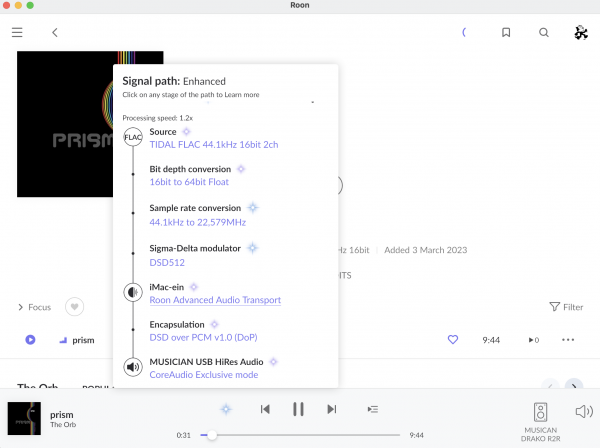
Konwersja PCM w locie do DSD512 i jeszcze bardziej „analogujemy” pliki
Bardzo dobry produkt dla melomana. Powiedziałbym, że chyba jeden z najciekawszych, bez bajerów, którzy przekonwertuje i wypluje sporo przyjemności, przyciągając na dłużej i mimo wspomnianych cech, raczej nie znudzi, jak komuś odpowiada taka maniera grania. Szczerze? Dalej, wyżej w R2R bym nie szukał, bo stratosfera (i łączenie rzeczy tutaj wykluczających się) to stratosfera cenowa, a równie dobrze i dla kieszeni lepiej jest po prostu dobrego D/S sobie nabyć. I mieć i to i to.
Znaczek się należy.
CENA: 3500-3800 pln
PLUSY:
- bardzo analogowo, bardzo muzykalnie, bardzo płynnie
- czaruje, ciepło i łatwo wchodzi ten dźwięk
- przestrzeń, baaaardzo przestrzenne to, powietrza dużo
- nie tylko pliki, ale płyta srebrna bardzo tu zyskuje, może nawet najbardziej?
- świetnej jakości materiały, świetne spasowanie- słuszna waga i dużo własnych patentów (no może dzielone to ze wspomnianym Denafripsem, mniejsza)
- cena, bardzo atrakcyjna jak na R2R, ale też w ogóle jak na to, co dostajemy, czytaj pancernego DACa
MINUSY:
- cierpi rozdzielczość, detale, mikro się znikają
- interpretuje po swojemu, znaczy koloryzuje, górę maskuje
- NOS nic nie wnosi, znaczy jest tak samo bez jak i z
- pilot to fajna rzecz, tu jej nie ma. Da się przeżyć, ale…
Specyfikacja
DSD
• DSD64- na TOSLINK, koaksjalnym i AES/EBU
• DSD1024 na wejściach USB & I2S
PCM
• 24bit/ 44.1, 48, 88.2, 96, 176.4, 192kHz (all)
• 24bit/ 1536kHz na wejściach USB i I2S
Wejścia cyfrowe
• Koaksjalne na 1 x RCA
• Optyczne x1
• USB x 1
• AES/EBU x 1
• I2S przez HDMI LVDS *1 (4 ustawienia)
Wyjścia analogowe
• niesymetryczne RCA
• symetryczne XLR
Parametry techniczne:
Napięcie wyjściowe PCM (@ 0dB, 1kHz)
• XLR : 2.8Vrms
• RCA : 1.4Vrms
Napięcie wyjściowe DSD (@ 0dB, 1kHz)
• XLR : 2Vrms
• RCA : 1Vrms
• THD
• XLR : 0.0016%
• RCA : 0.007%
Stosunek sygnału do szumu
• XLR : 126dB
• RCA : 111dB
Pasmo przenoszenia @ +1/-3dB
• XLR : 10Hz-85kHz
• RCA : 10Hz-85kHz
Dynamika
• XLR : 110dB
• RCA : 119dB
Zniekształcenia fazowe
• XLR : 0.016°
• RCA : 0.031°
Szum
• XLR : 1.3µVrms
• RCA : 4µVrms
Wymiary
• 280 x 250x 50 mm, masa 3.9 kg
Tryby próbkowania do wyboru : Non-Oversampling NOS (przetaktowanie wyłączone) / Oversampling OS (przetaktowanie włączone) …bez różnicy, serio.
Podziękowania dla oficjalnego dystrybutora za użyczenie klamota
Autor: Antoni Woźniak
ENGLISH VER.:
„Analogue” DRACO – you won’t find a cheaper R2R. Yea!
In the title this time, I reveal the two main features of this transmitter. For fans of the short form – you may not read on (hyhy). For the rest, a handful of thoughts on this cool little box. Cool, because the form is fully related to the more expensive ones, no accountant cuts here apart from simply a smaller format (it is smaller, but thick-bodied and just the right weight… heavy that! We like it) we have the same. Meaning we have in Musician Audio’s release an R2R DAC equipped with, among other things, I2S (HDMI) interface and balance on the outputs, NOS mode (non-over-sampling… here, honestly, I don’t see the difference), a very good SPDIF implementation. Regarding the last one, great sound from silver discs, if someone plays like this from such a music source i.e. a silver disc then I really sincerely recommend this box.
Because what distinguishes this proposal from others is „analogue”, understood as softness, viscosity of sound, extremely extended spatiality, something we call fluidity… in other words, it is very easy listening. This usually means that it does not differentiate but unifies, that resolution suffers, that detail is out of the question. Meaning it’s not just glass-and-eye (overclocked and glassy-dry playing), but insight into the recording with exposure of micro-details. You won’t find that here. If that’s what you’re looking for, then don’t bother – it’s not for you. If, however, digital generally annoys you (it’s an aberration these days, but there are such gingers), if a vinyl lands on your adapter (I like it, others say turntable, I prefer it that way), or if you listen to a tape in an old-school way, then you have just found something perfect.
Yes, these are the associations that are evoked by dealing with this piece of junk ![]() . Just like that. Transforming the digital into something associated not with computers, databases, files, DSP or whatever, but with the era before, when music required more concentration, forced you to move your four legs, was something less consuming, in the background, an ordinary product, and I don’t know? Sublime? I don’t mean elitist, because it has always been for everyone and in various forms, but „attentiveness”, concentration, not even the plethora and the song-moment, but the whole album, the whole concept is crucial… ehhh.
. Just like that. Transforming the digital into something associated not with computers, databases, files, DSP or whatever, but with the era before, when music required more concentration, forced you to move your four legs, was something less consuming, in the background, an ordinary product, and I don’t know? Sublime? I don’t mean elitist, because it has always been for everyone and in various forms, but „attentiveness”, concentration, not even the plethora and the song-moment, but the whole album, the whole concept is crucial… ehhh.
Okay, of course I’m going out on a limb here, sighing for the old, but there is also an opportunity here, because DRACO is just that old. It is old in its familiarity, in its form, in its content. Because it’s a big, heavy thing for the centimeters it counts, bulky, communicating with miniature LEDs only, no displeases, a clunker that evokes nostalgic memories. It used to be like that (in the sense of a black box for changing from digital to analogue media). Oh, and I would not have mentioned – and this is important – that this DARCO is dark, it is such an electronic-box variation of the HD-650 cups. I mean, the legendary headphones, which are still pleasing to the ear in the old version, and which are just like that – dark – as we know. And this promises something else for someone like me EXTRA. Baaaaasssssss. Low, organic, rich… oh yeah. Which of course rolls us the treble, clearly depleted, less present. For a bass-head like mua, that’s what I play, because for me the bass-head is often the essence, without it there is no satisfaction.
Did I mention the lack of difference in NOS? I mentioned. Often in discrete, resistor- and transistor-based converters, switching to non-overdrive mode changes a lot in the sound. Here, it was not possible to grasp the difference, which I interpret either as a poor implementation of such a solution, or… a consequence of the layout adopted by the designers. This, just like in the Denafrpis (yeah, we’re about to talk about a direct competitor, the Aries II from this very manufacturer, which we tested, and which made a name for itself with its R2Rs on the market), was developed around a programmable bone, it would be correct to write DAC processor – Altera Cyclone IV. This is a popular FPGA bone, which here plays the essential role of input receiver circuitry, digital filter handling, but above all the bone that controls resistor switching. As usual, the USB interface has its own driver, but also originally because it is not XLINX/XMOS but an ARM-based STM32F446 processor.
What deserves respect is that everything here has been written (code) for this particular solution, I mean hardware platform. As I already wrote in the review of the more expensive Pegasus (it stayed in the editorial office, acquired – because too good to give away) Musician Audio wrote the driver in collaboration with a specialist under Windows (Aoshida with Tesycon). The same applies to the aforementioned FPGA bone. At the same time (it’s a hypothesis, I don’t have hard evidence for it) Denafrpis and Misician use the same patent for the chip architecture, the boards (PCB) are similar, the code also looks the same. Well, China – not surprisingly. The cool thing is that while Denafrpis has a cheap Aries (Aries II now called Enyo, our review: http://hd-opinie.pl/5429,audio,inaczej-i-lepiej-z-pliku…). there the price list is soaring into the stratosphere, while it’s sort of cheaper at a domestic rival. Minor. It looks to me like some kind of outsourcing, maybe even conscious sharing, for us the nice thing is that we have more choice. The Aries II is very classic and boring, quite light and more of a desktop, so to speak, while the DARCO is a compact clamshell, but seriously designed for the living room. Both have no remote control, so you have to move your feet if you need to, but there’s nothing to set up, either, as these are pure DACs.
What definitely sets the Aries II apart from the similarly priced (currently, as the price is under 4k, it was over at Denafrpis) Aries is the fully balanced track with the aforementioned I2S and AES/EBU interface. This is not present in the Aries, here in the DARCO it is. For me, it’s important because it was the digital, balanced one that was hooked up to the Musical Fidelity M1 transport and the compact disc sounded almost like a black disc. I was giga-impressed, and this impression was probably heightened by, this time, the successful marriage with the Roksan amplifier. Also balanced with a very smooth, myopic sound. It was a pleasure to listen to these discs, so much so that I didn’t particularly feel the need to move quickly to the computer, which was mostly to be. It’s that ‘+’ I mentioned in the introduction for the digital-skeptics, analogo-lovers. The physical, but nonetheless digital source that is the silver disc has benefited greatly here.
Deepening this syrupy, viscous, warmth, and a significant one at that (again, who likes what) was the switch to SE and CULM terminals on the Devils. This was even more towards conventional analogue, now with an obvious loss of selectivity in favour of smoothness, even sweetness that oozed from the speakers. Such very non-digital playing. A quick check of the old NAD 5120 (needle) and … mhm… we are in a similar environment, where music is more malleable, organic, usually more pleasant to the ear, more digestible from the first note, it just enters immediately, which cannot be said about digital, because it can be different.
On headphones, 1-bit playing was still tried with the A90. Such a feat, because I’ve made some collections from a very respectable file composition, which is NativeDSD. If one is to play with such files, it should be specially prepared as an alternative to the standard sound recording format, i.e. PCM. Both Denafrpis and Musician Audio have prepared the circuit operation in the same way – PCM and DSD have their own, separate resistors in which the digital-to-analogue conversion is generated by the FCGA dice software. For PCM we have a 24-bit circuit and for DSD, separately, a 6-bit circuit. As DSD is considered a very ‘analogue’ way of storing music in a file, so to speak, the equivalent of ‘black’ on a PC or handheld.
So what about this one-bit playback? Well, beautifully, beautifully, because once it was possible to play these high-performance files in high-performance circumstances (yes, we have here for PCM a cosmic 1536, and for DSD as many as 1024), and also the sources made available on the aforementioned website (NATIVE DSD) are natively prepared DSD512 files. And although numbers don’t play (alone), and more and more often they don’t translate into anything tangible… here, on the DARCO (and on Pegasus, see: http://hd-opinie.pl/5429,audio,inaczej-i-lepiej-z-pliku…) one could feel what the difference was. The difference between the R2R and the most popular Delta-Sigma based converters… even my over-performing (better than the previous champion Matrix Audio X-Sabre 3 Pro http://hd-opinie.pl/13937,audio,ma-x-sabre-3-czyli-jak-to…) Gustard’s two-chip X26Pro http://hd-opinie.pl/13828,audio,gustard-x26pro-i-dalej… had to acknowledge the superiority of the 2x cheaper DRACO when listened to on the DSD earmuffs athletically just. It was the quintessence of a smooth transmission with remarkably for the medium reproduced space. Emotional playing like this, for lovers of classical or early music and jazz I think the choice is obvious.
I don’t know if it’s possible to play it any better digitally (in analog way), I think that silver discs as a medium are out of the question here, maybe apart from SACD (?) transports, but I’m not able to verify that, because my player for this format is only a PS3, and therefore analogue (not too bad), on a specially made component cable, or HDMI (AV), and this is where the problems with converting such a signal to analogue start. On a side note, I have such a funny contraption (an HDMI DAC made for installation), which even manages in SQ, but it is not symmetrical, and the headphones nevertheless gain, and the planers definitely gain in balance.
This smoothness, good dynamic range is also due to the patented buffer. As you know, a million times on HDO has been, one of the best ways to avoid shoals in computer audio is to play from memory, from the buffer precisely. This rules out the appearance (along with error correction) of most problems and is generally always recommended when the source is a computer transport. In this way, we fight jitter, we fight possible transmission problems (in the age of fixed broadband connections, this is seemingly a margin, but only seemingly, because sometimes the quality of streaming is poor). What we have here is a FIFO, what could figuratively be called a gateway through which musical zeros and ones (well data, data dear) go on to be converted from digital to analogue form. What comes in (first-in) is clocked with an internal clock, changed into an I2S form understandable for the DAC chip with an appropriate time reserve (we fill up the memory cells) then briskly lands on a discrete multibit converter, made up of separate circuits as I wrote above, and finally, as an analogue signal is sent to the output sockets. As it still needs to be converted from current to voltage form, the manufacturer’s I/U circuits are used in the circuit. And so it goes…
…and it probably wouldn’t work so well if it wasn’t for the power supply and voltage stabilisation circuit, which harmonises nicely with everything above. Musician didn’t skimp on this and gave, as in its more expensive products, Wimy polypropylene and Nichicon Silmic II electrolytic capacitors, and inside additionally a large toroidal transformer, made especially to order (and not from a basket), is delicious. I elaborate on all this, on the technicalities, this time for a reason. I like to be detailed, as you know, but often, often in the case of DACs or electronics in general, based on standard sets of bones, typology repeated to the point of boredom, construction scheme, I let it go, because how much can I write about the same thing over and over again. Here it is different, original, so it is worth writing more.
All right, I’ve written it out. What is it like in the end, because „analogue” seems to be obvious from the description above, but can’t it be cheaper? Well, it seems not, as the reviewed DAC can be purchased for a very pleasant 3500 Polish zloty, so cheaper than the Aries II, or at a similar price (sometimes 3800). These are not big differences, but they are there, and, perhaps more importantly, the DARCO offers more (although, to be fair, the Aries II tries to be very AV friendly because it has a dual coax/toslink mix) and seems to be a product that plays more with the mannerisms we would expect from such a setup, from one like the R2R. Also here we have that musical-analogue way of reproduction associated with a needle rather than a comp more than with Denafrips. Just don’t expect hyper-resolution, turbo detail or very neutral and even playing here. Don’t. There is more spontaneity here, a coloured sound, more feeling less analysing. For me, this is one of the best proposals within a reasonable budget, allowing not only to get acquainted with a different way of digital reproduction from the ubiquitous D/S system, but also to play files (and records, silver records!) in a cool, very pleasing to the ear way. It’s not for everyone, not necessarily for people of the ‘younger generation’ who grew up on file players and factory music in general (that sounded pejorative, sorry, but I think you’ll agree with me that there’s something to it – it’s boosting, it’s louder, it’s compressing, it’s standardising, etc). Definitely for the gingerbread man, definitely for those looking for something different, even at the cost of lack of detail, coloration, a certain shift within the bandwidth (withdrawn treble).
A very good product for the music lover. I would say that it is probably one of the most interesting, without fabrics, which will convert and spit out a lot of pleasure, attracting for a longer period of time and, despite the aforementioned characteristics, is unlikely to bore anyone with such a manner of playing. Honestly? Further, higher in R2R I wouldn’t look, because the stratosphere (and combining things here that are mutually exclusive) is the price stratosphere, and it’s just as well and for the pocket it’s better to simply acquire a good D/S for yourself. And have both.
The stamp is due.
PLUSES:
- very analogue, very musical, very smoothly
- charming, warm and easy to enter this sound – space, very spacious this, air a lot of
- not only the files, but the silver disc gains a lot here, maybe even the most?
- great quality materials, excellent fit
- fair weight and a lot of its own patents (well, maybe shared with the mentioned Denafrips, less so)
- price, very attractive for the R2R, but also in general for what you get, read „armoured” DAC
MINUSES:
- resolution suffers, detail, micro disappears
- it interprets in its own way, i.e. it colours, the top is masked
- The remote control is a nice thing, here it is absent. It can be survived, but…
…and one more thing: NOS does not contribute anything, I mean it is the same without and with
Official, global distribution here: https://www.aoshida-audio.com/products/musician-draco-r2r-decoder
Dodaj komentarz
Musisz się zalogować, aby móc dodać komentarz.




